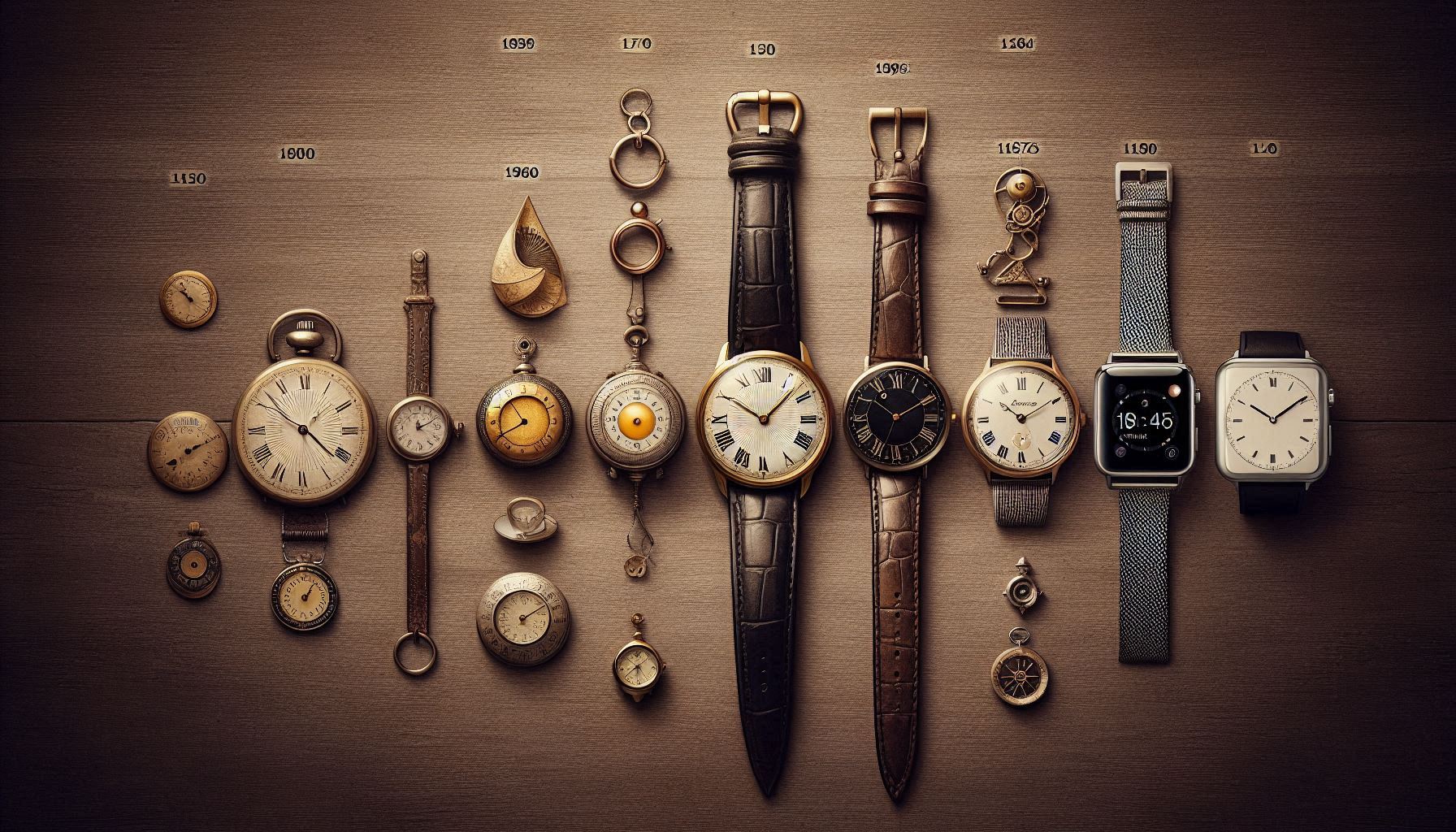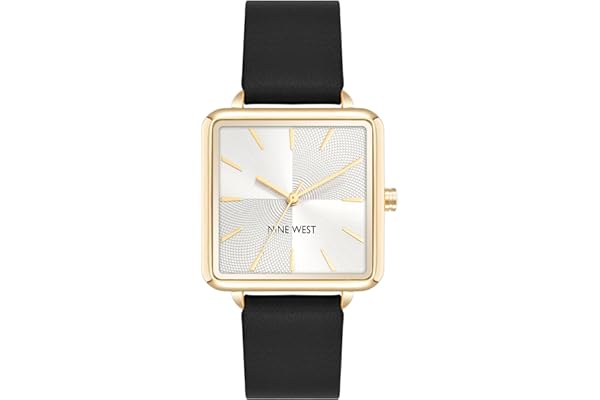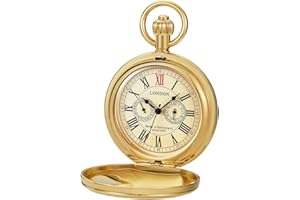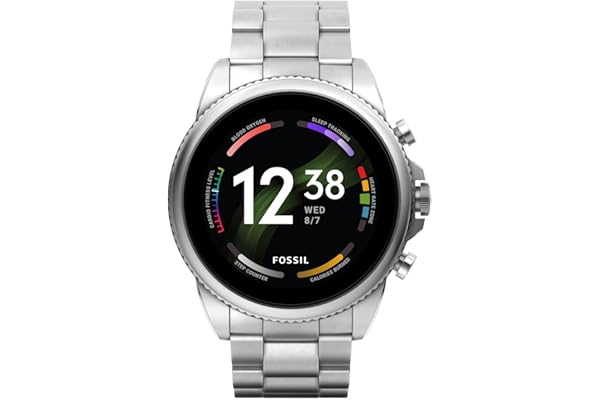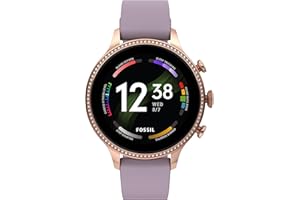Evolution of Watch Design Over the Years
Contents
The Early Beginnings of Watch Design
The history of watch design is as rich and varied as the history of timekeeping itself. The earliest watches, which emerged in the 16th century, were more ornamental than practical. These were often large, cumbersome devices that wealthy individuals wore as a status symbol. The designs were intricate, showcasing the craftsmanship of the era, with elaborate engravings and often adorned with precious stones. The primary material used was typically brass or gilded metal, giving these early watches a distinct and opulent appearance.
As the Renaissance gave way to the Enlightenment, the demand for more practical timepieces grew. This period saw the introduction of smaller, more portable watches, including the first pocket watches. The designs began to focus more on functionality, although aesthetics remained important. The dials were often made of enamel, with hand-painted numerals and delicate hands, reflecting the artistry of the time. The cases, still ornate, often featured intricate motifs inspired by nature and mythology.
During the 18th century, watchmaking began to spread across Europe, with notable centers in England, France, and Switzerland. Each region developed its own distinct style, influenced by local culture and technological advancements. In England, for example, the focus was on precision and reliability, leading to the development of the marine chronometer. In France, luxury and elegance were paramount, resulting in watches that were as much about fashion as they were about function.
The Industrial Revolution and Its Impact on Watch Design
The Industrial Revolution of the 19th century marked a significant turning point in watch design. With the advent of mass production techniques, watches became more accessible to the general public. This democratization of timekeeping led to a shift in design priorities. While luxury watches continued to be crafted by hand, the majority of timepieces were now produced in factories, with a focus on affordability and durability.
One of the most significant innovations of this era was the introduction of the wristwatch. Initially designed for women, wristwatches quickly gained popularity among men, particularly during World War I. The need for soldiers to have easy access to timekeeping devices led to the development of robust, practical designs. These early military wristwatches were characterized by their simplicity, with clear, legible dials and sturdy straps.
The Art Deco movement of the 1920s and 1930s had a profound influence on watch design. This period was characterized by bold, geometric shapes and an emphasis on symmetry. Watches from this era often featured rectangular or square cases, with minimalist dials and stylized numerals. The use of new materials, such as stainless steel and platinum, further enhanced the modern, streamlined aesthetic of Art Deco watches.
Mid-20th Century Innovations in Watch Design
The mid-20th century was a time of great innovation in the world of watch design. The development of new technologies, such as automatic winding and water resistance, expanded the functionality of watches and influenced their design. This era also saw the rise of iconic watch models that remain popular to this day.
The 1950s and 1960s were marked by the introduction of the dive watch, a genre that combined robust construction with elegant design. These watches, designed for underwater exploration, featured rotating bezels and luminous dials, making them both functional and stylish. The Rolex Submariner and the Omega Seamaster are classic examples of this period’s dive watches, known for their durability and timeless appeal.
The space race of the 1960s also left its mark on watch design. The Omega Speedmaster, famously worn by astronauts during the Apollo missions, became synonymous with precision and reliability. The design of these watches was driven by the need for accuracy and functionality in extreme conditions, leading to the development of chronographs with clear, easy-to-read dials and robust cases.
The Quartz Revolution and Its Influence on Design
The 1970s witnessed the advent of quartz technology, revolutionizing the watch industry. Quartz watches, powered by battery-operated quartz crystals, offered unprecedented accuracy at a fraction of the cost of mechanical watches. This technological breakthrough had a profound impact on watch design, as manufacturers experimented with new materials and styles.
During the quartz revolution, watches became more diverse in their design. The minimalist aesthetic of the 1980s, characterized by sleek lines and understated elegance, was exemplified by brands like Swatch and Seiko. These watches often featured plastic cases and bright, bold colors, appealing to a younger, fashion-conscious audience.
Despite the dominance of quartz technology, the demand for mechanical watches persisted, leading to a resurgence of interest in traditional watchmaking techniques. Luxury brands, such as Patek Philippe and Audemars Piguet, continued to produce exquisite mechanical timepieces, blending classic design elements with modern innovations.
Contemporary Watch Design: A Fusion of Tradition and Innovation
In the 21st century, watch design has entered a new era, characterized by a fusion of tradition and innovation. While the classic aesthetics of vintage watches remain popular, contemporary designs often incorporate cutting-edge technology and materials.
Smartwatches, with their digital displays and connectivity features, have become a significant segment of the watch market. Brands like Apple and Samsung have pushed the boundaries of what a watch can do, integrating fitness tracking, notifications, and even mobile payments into their designs. Despite their modern functionality, many smartwatches pay homage to traditional design elements, with customizable faces and interchangeable straps.
At the same time, the appreciation for mechanical watches has grown, with collectors and enthusiasts seeking out limited edition models and bespoke designs. Independent watchmakers, such as MB&F and H. Moser & Cie, are at the forefront of this movement, creating unique timepieces that blend artistry with horological innovation.
In conclusion, the evolution of watch design is a testament to the enduring appeal of timepieces as both functional objects and works of art. From the ornate pocket watches of the Renaissance to the sleek smartwatches of today, each era has left its mark on the world of horology, reflecting the changing tastes and technological advancements of the time.
